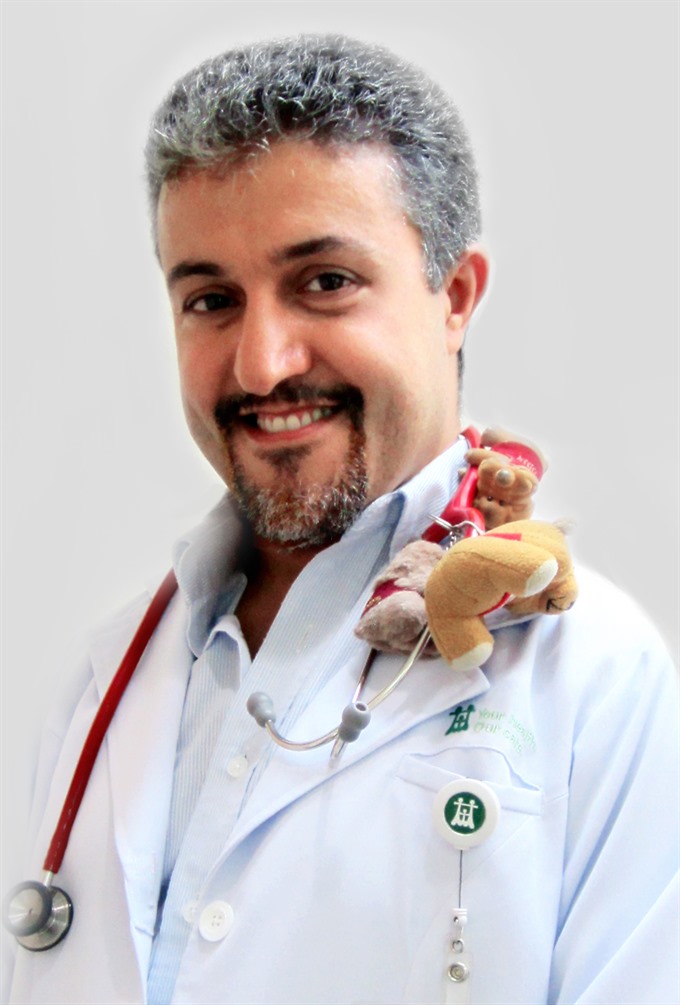 Life & Style
Life & Style

Decades ago, autism was considered a form of mental retardation because of the inability of the patients to develop communication skills and language. But we now know that children with autism are not necessarily mentally retarded. In fact, many of them exhibit higher intelligence than the average child and some have extraordinary capabilities in different fields, such as memory, mathematics, arts and physics.
 |
| Dr. Jonathan Halevy. — Photo courtesy of Family Medical Practice |
By Dr. Jonathan Halevy
Understanding autism
Human beings are “social creatures”. We communicate through body language, gestures, facial expressions, sounds and verbal language. A child with autism, however, is unable to learn these social and communication skills. He has difficulty in understanding and developing a language; he won’t show interest in communicating with other children or adults, seeking their attention or paying attention to them. He won’t be able to interpret the meaning of gestures, body language and expressions. He will struggle to understand other people’s emotions. Some of these children may have limited interest in their surroundings. They will develop a strict and repetitive behaviour. They may play with the same toy repeatedly, often without understanding the nature of the toy (banging a toy car again and again, instead of “driving” it). They will not have an “imaginary friend” like other children at their age, won’t pretend to “cook” or “feed a baby” or tell imaginary stories.
Decades ago, autism was considered a form of mental retardation because of the inability of the patients to develop communication skills and language. But we now know that children with autism are not necessarily mentally retarded. In fact, many of them exhibit higher intelligence than the average child and some have extraordinary capabilities in different fields, such as memory, mathematics, arts and physics.
The spread of autism
The number of children identified as “autistic” has grown exponentially over the years:
* During the 1960s and 70s, the prevalence of autism was some 0.5:1,000 (one in every 2,000 children).
* In the 1980s, this number rose to 1:1,000.
* A decade ago it was 1:100.
* Today, in the United States, the prevalence of autism is estimated to be a frightening 1:68. (Boys are four times more likely to be affected than girls).
We now know that autism has a genetic basis. Over 800 genetic mutations have been associated so far with the condition. If one child suffers from autism, there is a higher risk for other children in the family. An identical twin of an autistic child has a much higher risk. Older fathers are at a greater risk of having autistic children.
Environmental factors have immense effect on our genes. Environmental pollution, such as air and water pollution, and exposure to heavy metals and other hazardous chemicals can alter our genes and make them brittle, increasing the risk of mutation and dysfunction. But even these factors do not explain the rise in autism cases.
Electromagnetic (EM) radiation
Exposure to electromagnetic radiation through mobile phones, Wi-Fi routers, cellular communication, radio and TV antennas and even high-voltage electricity lines has rapidly increased over the past four decades. These are all around us: on the streets, in shopping malls, cafes and restaurants, in our homes and even in our pockets.
The rise in autism cases has been shown to correlate to the rise in exposure to EM radiation, which in turn can have a damaging effect on our genes.
What are the red flags of autism
*A baby that does not have a “social reciprocal smile” by the age of two to three months.
* No proper eye contact.
* No interest in the surroundings by the age of six months.
* No “back and forth” sharing of voices (babbling back to parent) and expressions by nine months.
* No “separation anxiety” or fear of strangers by nine months.
* No understanding of non-verbal communication, such as gestures, by the age of one year.
* Lack of speech by the time the baby is 16 months old.
* No imaginary friend at one-and-a-half years.
* No meaningful two-word sentences by the age of two.
* Restricted behaviour and interest.
* Lack of interest in other children by the age of one-and-a-half years.
* Any loss of acquired social or communicative skills.
If a child shows any of these red flags, he should be evaluated by his paediatrician. A child suspected of autism should undergo a hearing test to rule out hearing loss. Sadly, some parents, upon being told about the suspicion of autism in their child, either object to or simply deny the existence of the condition. They prefer to believe that if they ignore the problem and do nothing, the child will get better by himself. As painful as it may be, parents need to understand that the earlier the child gets professional intervention, the better the outcome will be. With professional support, the child will be able to learn new ways of communicating and growing, while the parents will get the much-needed support to cope with the situation. — Family Medical Practice
Jonathan Halevy, medical director of the paediatric department, is a published author on paediatric care. He joined Family Medical Practice in 2005, returning in 2013 after a year at the Royal Children Hospital intensive care unit in Melbourne. He is frequently invited by the local community to deliver health talks and has addressed many schools and parent groups on paediatric health issues and other medical topics.
For more advice on any medical topics, visit Family Medical Practice Hanoi at: 298 I Kim Mã St, Ba Đình Dist. Tel: (024) 3843 0748. E: hanoi@vietnammedicalpractice.com or https://www.vietnammedicalpractice.com.
FMP’s downtown Hồ Chí Minh location is: Diamond Plaza, 34 Lê Duẩn St, District 1; 95 Thảo Điền St, Dist 2. Tel: (028) 3822 7848. E: hcmc@vietnammedicalpractice.com
FMP Đà Nẵng is located at 96-98 Nguyễn Văn Linh St, Hải Châu Dist. Tel: (0236) 3582 699. E: danang@vietnammedicalpractice.com




